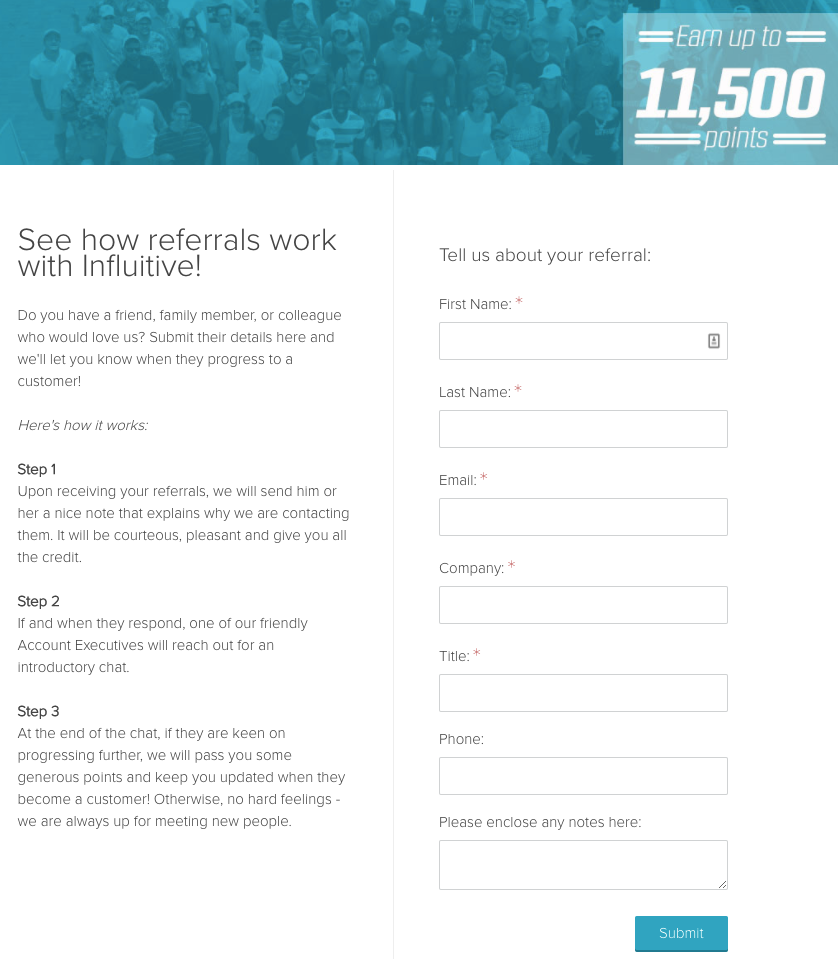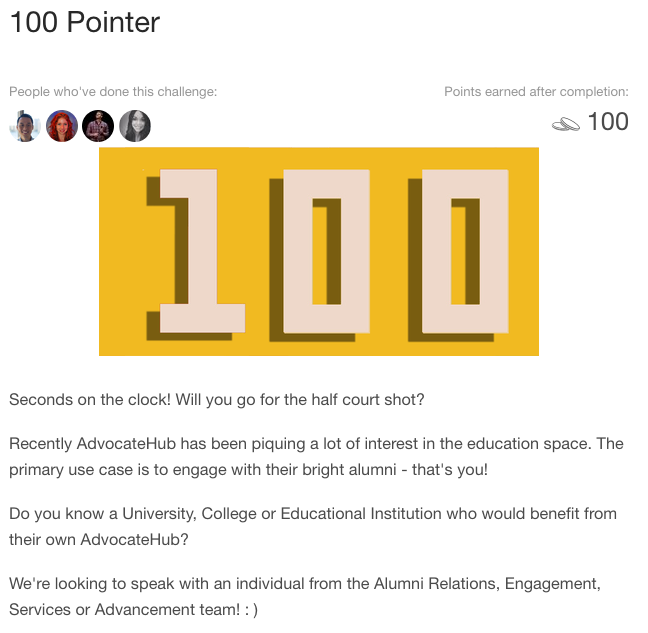Do you feel awkward asking customers for referrals?
You shouldn’t. According to Eksperten, 91% of satisfied customers say they’d give referrals.
Yet, on average, only 29% of customers do.
Why? It’s likely because you haven’t asked them.
Or, at least, not in the right way.
Barraging customers with emails asking for referrals isn’t going to make them crack open their Rolodexes–especially if they haven’t heard from you in a while.
However, creating an engaging B2B referral program that consistently delights your customers will.
Sound impossible? It’s not. Here are five referral program ideas to help you increase the number of high-quality leads you receive from customers each month.
1. Make your referral process clear
You need to build trust before customers will share contact info with you. That means you need to be transparent with the details of your referral campaign.
You should clearly explain to customers:
- How the information they submitted will be used
- Who will be reaching out to the referee and when
- How the referral process will work
- When they can expect updates on the state of their referral
Here’s how our referral page explains the process.

Because we did this, 42% of our monthly recurring revenue in 2015 was traced back to customer referrals.
When’s the best time to ask for a referral? When a customer:
- Gives you a high NPS
- Is excited to sign or launch with you
- Gets amazing results using your product or service
- Says something nice about you
Send them to a simple, clear page, and they’ll be more likely to share their contacts.
2. Make it easy to submit referrals
Have a simple page where your brand advocates can submit names to your referral program. Don’t rely on informal email channels or overly complicated forms (which we’ve already covered in step one).
Also, make it clear the type of prospects you’re looking for. Explain the buyer persona or types of companies you want to work with so your customers don’t have to think too hard about who would be a good fit.
You can even make it easier for customers to give a referral by combing through their social networks and asking for a specific introduction. This gives them the option to say yes or no, depending on how well they know the connection.

Do the work for your advocates, and they’ll be happy to do something in return.
3. Make sharing referrals fun for customers
Just because you’re a B2B company doesn’t mean your customers are cogs in a corporate machine. They’re people who have a sense of humor…so, if you engage them in a fun way, they’ll be more likely to take part.
Check out a challenge one of our customers posted. You may think it’s silly, but it led to two qualified sales opportunities in a little over a month.

Gamification also works. For example, we ran a March Madness-themed contest through our advocate marketing program, in which participants had 30 minutes to complete as many challenges—and submit as many referrals—as possible.

Participants received points, which could be cashed in for prizes or kept for social cachet within our advocate community. The sense of urgency made the experience more exciting and increased participation—we got 20 referrals!
4. Make referrals more personal
There are two ways to make the referral process feel more personalized.
First, customers will never give you referrals if they don’t love your brand. The closer they feel to you, the happier they’ll be to share contact info.
That’s why consistently engaging with customers by giving them valuable content and opportunities can create a better connection, and keep your brand top of mind.
 For example, Michael Beahm, Senior Marketing Manager at Blackbaud, created an advocate marketing program that rewarded customers for connecting with others in the non-profit community and participating in advocacy challenges such as reference calls and social shares.
For example, Michael Beahm, Senior Marketing Manager at Blackbaud, created an advocate marketing program that rewarded customers for connecting with others in the non-profit community and participating in advocacy challenges such as reference calls and social shares.
Because he built a connection with his customers, when he asked for referrals, they delivered. He asked his advocates for 30 referrals for his 30th birthday, and ended up getting 30 referrals in under a week!
Secondly, once a customer gives you a referral, make sure the sales rep personally involves them in the process. Reference the referrer’s name and copy them on your initial email outreach.
If you can highlight some of the success they’ve had with your product, even better! Your customer’s story will be better than any marketing collateral you could send the lead.
In fact, the customer will likely share more details without you prompting them—making the communication that much more authentic.
Here’s a sample email one of our top advocates, Liz Pedro, former Director of Customer Success Marketing at Mitel and current Director of Customer Advocacy at Five9, sent out on our behalf:

5. Make giving referrals rewarding
We’re not just talking about monetary rewards. While sending a gift card can work, many customers want something money can’t buy. By giving them rewards for participating in your B2B referral program, they’re more likely to keep coming back.
Software Advice’s 2014 Brand Advocate and Engagement Survey found that inviting customers to join a VIP program, and giving them public recognition—either by thanking them, or sharing their content on social media—can turn them into lifelong brand advocates better than physical gifts or incentives.
Boosting your customers’ professional profiles or making them feel special can work wonders, too. Try giving top referrers:
- Access to your C-suite
- A speaking opportunity at a conference
- Beta-testing or product previews
- Special priority support
If you show your customer advocates love, they’ll show it back with a flood of high-quality referrals.
Want to learn how to start a referral program? Watch this video:
More B2B referral program resources:
This blog was originally published on June 18th, 2015, and was updated on May 2nd, 2017.















































 For example,
For example, 